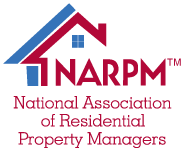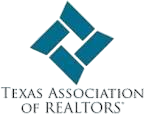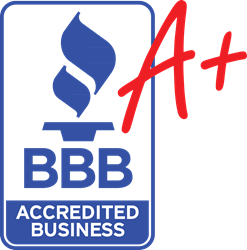In 2025, running a successful property management business means staying ahead in a fast-moving, tech-driven rental landscape. The old ways—manual spreadsheets, late rent, and endless follow-up calls—just don't cut it anymore.
Today’s property managers need all-in-one software that not only handles the basics but also truly transforms their workflow.
With robust features, advanced tools, and real-time access to everything from tenant communication to financial data, modern software empowers you to do more—with far less stress.
Whether you're managing a handful of units, large-scale mixed-use properties, or growing a full-scale property management company, the right platform lets you market properties, handle maintenance, and generate detailed financial reports—often with just a few clicks. It’s not just about efficiency; and it’s about giving yourself the edge in a competitive market.
In this guide, we’ll explore the advanced features and must-have tools that define the best property management software of 2025—so you can stay organized, impress clients, and grow your portfolio with confidence.
Key Takeaways
- In 2025, property management software should offer online rent collection, tenant screening, automated lease management, and maintenance tracking from a centralized location.
- Software with integrated accounting tools streamlines financial management, tax preparation, and the creation of custom financial reports.
- Mobile accessibility, tenant portals, and communication tools contribute to enhanced tenant satisfaction and operational efficiency.
- The best property management software saves time, boosts productivity, and allows you to manage everything on one platform.
1. Automated Rent Collection and Financial Tools
Efficient rent collection remains the backbone of any rental property management software. In 2025, property managers need tools that not only collect payments but also track late fees, send automatic rent reminders, and provide detailed financial reports for seamless tax filing.
Your software should enable tenants to pay online via debit card, credit card, or bank account and allow property owners to view income breakdowns in real-time. This digital shift enhances cash flow and saves hours of manual entry.
Key Benefits:
- Collect rent online with automated invoicing
- Schedule late fees and overdue payment notices
- Integrated accounting software for tax preparation
- Export-ready, comprehensive financial reports
2. Tenant and Owner Portals for Seamless Communication
Modern tenant management requires more than just rent tracking—it’s about delivering a smooth experience.
With portals designed for both tenants and property owners, your rental management software should simplify how users submit maintenance requests, sign lease agreements, view rental applications, and communicate with management.
Key Benefits:
- 24/7 access to lease agreements and payment history
- In-app maintenance management with photo uploads
- Transparent owner dashboards for financial reports
- Chat or message tools for real-time updates
3. Mobile Access and Cloud-Based Functionality
Landlords managing units need full access from smartphones and tablets. The best property management software offers fully functional mobile apps and cloud-based access, giving teams the freedom to manage properties anytime, anywhere.
Key Benefits:
- Push notifications for maintenance requests and rent payments
- Mobile inspections and reporting
- Access to rental listings, rental process, and tenant files
- Sync across devices for a centralized system
4. AI-Powered Tenant Screening and Rental Applications
Selecting quality tenants is crucial for protecting your assets. Innovative rental management software will incorporate AI-powered tenant screening, evaluating a potential tenant’s financial background, rental history, and creditworthiness.
Being able to customize rental applications, collect digital signatures, and automate approval workflows makes it easy to turn prospective tenants into residents.
Key Benefits:
- Built-in tenant screening tools
- Customizable and branded rental applications
- Integration with background check services
- Automatic alerts for red flags and application completeness
5. Maintenance and Vendor Management
Keeping up with repairs across multiple rental properties can become overwhelming without the right tools and resources. Your software should help manage maintenance requests, assign jobs to vendors, and track repair costs in real-time.
This not only supports better vendor management but also helps you preserve property value and ensure lease compliance.
Key Benefits:
- Schedule, approve, and track maintenance requests
- Link costs to detailed financial reports
- Track vendor performance and spending
- Allow tenants to submit maintenance requests via app or portal
6. Advanced Lease Management and Legal Compliance
Lease management in 2025 is more complex, especially with varying landlord-tenant laws across jurisdictions.
Your property management software must include tools for creating state-specific lease agreements, setting renewal reminders, and managing expirations.
Key Benefits:
- Store, send, and e-sign leases
- Comply with local regulations using property management software built with legal templates
- Set automated alerts for renewals or expirations
- Attach lease terms to tenant profiles for quick reference
7. Marketing and Rental Listings Integration
Filling vacancies faster is another key benefit of using high-performing management software. Your system should enable you to post and manage rental listings across multiple platforms, as well as efficiently track leads.
Key Benefits:
- List units on Zillow, Apartments.com, and other similar platforms.
- Receive and track rental applications
- Connect with potential tenants from a centralized location
- Measure marketing performance
Your Blueprint for Property Management Excellence
In today’s data-driven, on-demand rental landscape, success doesn’t come from working harder—it comes from working smarter.
The right property management software isn’t just a tool; it’s the digital infrastructure of a thriving property management business.
With the power to collect rent online, screen tenants, manage maintenance requests, and generate detailed financial reports—all from a centralized platform—you’re no longer reacting to problems; you’re staying ten steps ahead.
This isn’t about keeping up with the industry; it’s about setting the standard. When you invest in rental property management software with the right mix of advanced features, you're not just saving time—you’re elevating service, minimizing risk, and unlocking new potential for your property management company.
Ready to future-proof your operations? Let Residential Leasing Property Management help you choose the best tools and support to lead with confidence.
Reach out today and take the first step toward smarter, simpler, and more scalable property management!
FAQs
Q: What’s the best property management software in 2025?
A: Top platforms include AppFolio, Buildium, Rentec Direct, Rentvine, and Propertyware, each offering all-in-one platform solutions for rental management, tenant screening, and financial management.
Q: Can I use rental property management software for just a few units?
A: Absolutely. Even landlords managing just a few residential properties benefit from online rent collection, tax filing, and lease tracking features.
Q: How does the software help with rent collection?
A: Most platforms enable you to collect rent online, send automatic rent reminders, track late fees, and deposit payments directly into your bank account.
Q: Is tenant screening built into the software?
A: Yes. Many systems allow you to screen tenants, assess a potential tenant's financial history, and process applications digitally.
Q: What other tools are included?
A: Features include accounting tools, marketing rental listings, vendor management, and mobile apps for maintenance management and communication—all in one centralized system.
Additional Resources:
Why You Need Multifamily Property Management in Houston for Success
Houston Landlord’s Guide to Eviction Procedures and Best Practices








